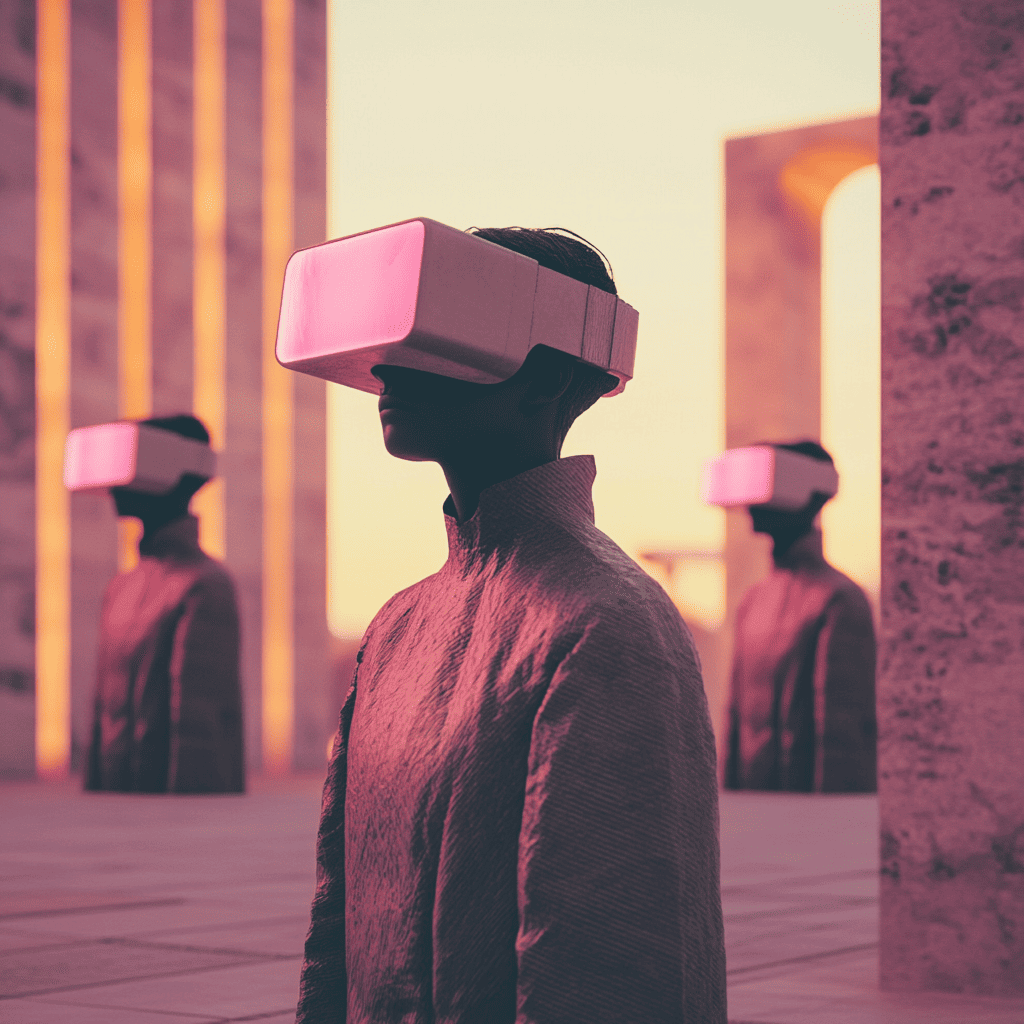Modern Web3 technologies create a new format of art , in which illustrations and animations come to life in virtual space. Metaverses become platforms for displaying, selling and interacting with digital creativity, erasing the boundaries between the real and digital worlds.
With the advent of NFTs, blockchain , and 3D art, artists have been able to create unique exhibits , attracting an audience willing to pay for digital artwork. Collectors can now explore virtual galleries , interact with animations, and even own exclusive items that only exist in the metaverse.
In this article, we’ll look at how artists and animators can use metaverses, create 3D galleries, sell their work, and make money in the new digital art market.
Metaverses as a New Home for Digital Art
Metaverses are virtual worlds where users can interact with each other, buy digital assets, and visit art exhibitions. Platforms like Decentraland, The Sandbox, and Spatial allow artists to display their work and engage audiences from around the world.
Why are metaverses ideal for art?
● Interactivity – users can not only look at the works, but also interact with them.
● Unlimited space – the ability to create large-scale exhibitions without renting physical premises.
● NFT Economy – Selling Art Using Blockchain Provides Transparency and Copyright Protection.
Beyond sales, metaverses give artists new ways to express themselves – illustrations can now come to life, respond to the user’s movements, and be part of larger digital installations.
Creation of virtual galleries: from idea to implementation
To place 3D art or animation in the metaverse, it is necessary to create a digital gallery that will become an exhibition space. This could be a virtual museum, a private art room, or even an interactive world where each object is associated with a specific theme.
The main stages of creating a gallery:
- Platform of choice – Decentraland, The Sandbox or another metaverse that supports NFTs.
- Design development – creating 3D space using Blender, Unity or built-in platform tools.
- Submission of works – uploading NFT illustrations, animations and interactive objects to the exhibition.
- Promotion – announcements on social networks, partnerships with collectors, holding virtual events.
Artists can earn money from gallery tickets, sales of tokenized items, and collaborations with brands interested in digital art.
3D Art and Animation: A New Level of Digital Art
3D technologies allow artists to create dynamic objects that can be integrated into metaverses. Illustrations are no longer limited to flat images, but can be sculptural, animated, or even interactive.
3D Art Formats in the Metaverse:
● Static 3D models are unique sculptures, architectural objects that can be collected.
● Animated NFTs are dynamic scenes with moving characters, lighting effects and textures.
● Interactive art objects – react to user movements and change shape upon interaction.
Web3 galleries allow you to immerse yourself in art and experience it not as a simple painting on the wall, but as a full-fledged digital experience.
How do artists monetize their art in the metaverse?
One of the key benefits of virtual galleries is the ability to make money from digital art. NFT and blockchain allow artists to receive direct payment, cutting out intermediaries.
Main methods of monetization:
● Sale of NFT objects – illustrations, 3D art, animation, available for purchase in cryptocurrency.
● Resale royalties – Every time an NFT changes hands, the artist gets a percentage of the transaction.
● Paid admission to the gallery – unique exhibitions and closed events can generate income.
● Advertising and brand collaborations – metaverses are becoming platforms for major brands willing to pay for virtual art.
Thus, metaverses not only create a creative environment, but also provide financial opportunities for artists.
The Future of Virtual Galleries and 3D Art
Metaverses continue to evolve, and digital art is becoming more popular every year. In the coming years, we can expect the integration of AI into 3D art creation, the emergence of full-fledged virtual museums, and the expansion of opportunities for interaction with NFTs.
What trends will determine development?
● Using artificial intelligence to generate unique digital art.
● Creating AR galleries – augmented reality will allow you to see NFT art in the real world.
● Development of cross-meta-universal exhibitions that unite different virtual worlds.
This opens up new possibilities for artists who want to adapt to the digital age and take advantage of all the possibilities of Web3.
How can an artist enter the metaverse?
If you want to grow in the world of virtual art, follow these steps:
● Select a metaverse to host your work (Decentraland, The Sandbox, Cryptovoxels).
● Create a 3D gallery and display your NFT illustrations or animations.
● Promote your art through Web3 communities, Discord, Twitter and exhibitions.
● Monetize your content through NFT sales, paid events, and collaborations.
● Stay on trend – keep up with new technologies and develop your skills in 3D and animation.
Metaverses have already become the center of digital art, and artists who master this format can take leading positions in the new world.
Questions and Answers
Decentraland and Spatial are the best options for showcasing digital art.
Yes, animated NFTs are in demand, especially in metaverses and Web3 games.
Promotion via Twitter, Discord, participation in Web3 communities and partnerships with brands.

